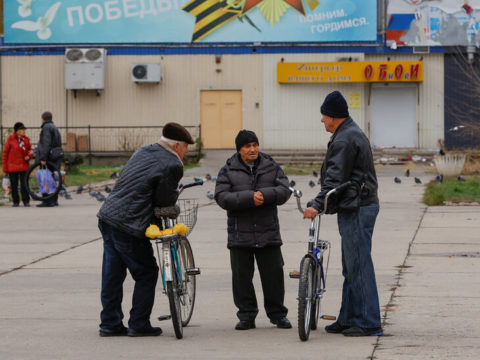
Here’s what you need to know:
President Trump’s re-election campaign committee ended September with only $63.1 million in the bank even after canceling some television buys late last month, leaving him badly outmatched financially against Joseph R. Biden Jr. in the final stretch of the campaign.
New filings with the Federal Election Commission showed the extent of Mr. Trump’s cash troubles, which caused the president to fly to California last Sunday for a fund-raiser with just over two weeks until Election Day. The president ended September with just over half as much money as he had at the beginning of the month.
While Mr. Trump’s campaign and its shared committees with the Republican National Committee have raised $1.5 billion since the start of 2019, the disclosures late Tuesday showed that his main re-election committee had only a small slice remaining. That account must pay for many of the race’s most important costs, including television ads.
All told, Mr. Trump’s campaign and its shared committees with the R.N.C. had $251.4 million entering October, compared to Mr. Biden’s campaign and its joint committees with the Democratic National Committee, which had $432 million in the bank.
“The Trump campaign has all the resources we need going into the homestretch of this election,” said Samantha Zager, a spokeswoman for Mr. Trump.
She added, “As Hillary Clinton proved when she outspent us 2-to-1 in 2016, no amount of money can buy the presidency.”
Mr. Biden’s campaign committee had not yet filed its full September report but he entered the month with $180 million cash on hand in that account compared to Mr. Trump’s $121 million and the president’s $900,000 in debts at the start of September.
“Yikes,” wrote Rufus Gifford, one of Mr. Biden’s deputy campaign managers who oversees fund-raising, when Mr. Trump’s cash-on-hand haul became public. He added, “Remember when Trump said he would fund his own campaign if he needed to? Well… He needs to.”
Mr. Trump’s campaign has been seeking to trim costs for more than two months, since Bill Stepien replaced Brad Parscale as campaign manager.
Under Mr. Parscale, the campaign spent heavily as it invested in constructing a massive database of email addresses and phone numbers to reach supporters and ask for money. But as the election as neared, hopeful projections for a massive uptick in contributions have not materialized.
Also on Tuesday, the R.N.C. announced that it entered October with $78.1 million cash on hand, after it spent $36 million more than it had raised in September in its effort to boost Mr. Trump in the final months of the election.
Rachel Shorey contributed reporting.

MILWAUKEE — Despite the unseasonably cool 35-degree temperature, lines were already snaking around two sides of the Frank P. Zeidler Municipal Building in downtown Milwaukee by 7:30 a.m., as crowds waited for more than two hours to cast their ballots on the first day of early voting in Wisconsin.
Jon Berlin, 70, a psychiatrist, arrived with his partner, Susan Hrlevich, 60, at 5:20 a.m. The pair, who are independent voters, wore parkas and brought folding canvas chairs as they walked from their downtown residence to cast votes for Joseph R. Biden Jr.
They said they feared even longer lines — and exposure to the coronavirus — if they had waited until Nov. 3 to vote.
“I don’t feel safe in this country for the first time,” said Mr. Berlin. “We have this horrible pandemic and we need a leader who can face the truth and tell the truth.”
Early voting has drawn crowds around the nation, and both campaigns are seeking to turn out their supporters. Senator Kamala Harris of California, Mr. Biden’s running mate, planned to participate in a virtual Milwaukee rally with Senator Tammy Baldwin of Wisconsin and several local officials to encourage early voting there.
Chrystal Gillon-Mabry, a 68-year-old artist, and her sister, Coral Hegwood, 59, a retired city employee, brought books to read and chairs when they arrived before 5:30 a.m.
Ms. Hegwood said that she was still undecided as she stood in line. “I don’t want to vote for Trump, but I don’t want to compromise my Christian beliefs,” she said. Afterward, she said she had voted for Mr. Biden. “I prayed and prayed on it,” she said, concluding that “Biden has more compassion than Trump — he has no compassion or empathy for anybody.”
Before in-person early voting began Tuesday, more than 915,000 Wisconsinites had voted since officials began mailing absentee ballots Sept. 17, a figure that amounts to about 30 percent of the state’s total vote in 2016. The turnout has been far higher in the state’s traditionally Democratic strongholds.
Dane County, which includes Madison and is by far the state’s most Democratic county, has had turnout already that amounts to close to half the votes cast there four years ago. No other county’s turnout eclipsed more than 37 percent of its 2016 numbers.
While Wisconsin Democrats have encouraged voters to cast ballots as soon as they are able, the state’s Republican Party urged supporters to wait until early voting began. “Avoid the long lines on Election Day,” read a flyer the Republican Party of Wisconsin mailed to supporters last week, urging them to make plans to vote early, which the state describes as voting “absentee” in person. The mailing made no mention of voting by mail.
Denise Williams, 67, who uses a walker and has been staying mostly at home since the pandemic, was glad to socialize — from at least a few feet apart — with fellow voters, all of whom wore masks. She arrived at 6 a.m. and waited almost three hours.
“Our country is too divided, I want it back together again,” said Ms. Williams, a retired nursing assistant who voted for Mr. Biden. She would have voted by mail, she said, but she never received a ballot. “I wanted to make sure my vote got in, and with my health, I don’t know how I’ll be on Election Day.”
THE EARLY VOTE

When early voting began in Florida on Monday, 366,436 Floridians went to the polls and cast ballots in person, according to data collected by the United States Elections Project.
The total eclipsed the record set on the first day of early, in-person voting four years ago, when about 291,000 people cast ballots, according to The Miami Herald.
Including mailed-in ballots, more than three million people have now voted so far this year in Florida. That’s more than 30 percent of all the votes cast in the state in the entire 2016 election, data shows.
Both parties, and campaigns up and down the ballot, are trying to figure out whether the big early numbers are likely to translate into record turnout or simply indicate that people are voting earlier than usual because of coronavirus fears and mail delays.
The early data, collected by Michael P. McDonald, a professor of political science at the University of Florida, shows that registered Democrats in Florida have been far more likely to vote by mail than Republicans, suggesting that President Trump’s frequent broadsides against voting by mail may have resonated with Republicans.
“This is a dynamic we’re seeing elsewhere, too,” Dr. McDonald said in an interview.
But Republicans nearly tied Democrats when it came to casting ballots in person on the first day of early voting.
Here is what the Florida data reported:
-
3,033,702 Floridians have already voted.
-
Turnout is already 31.7 percent of what it was in the entire 2016 election.
-
366,436 people had voted in person, including 154,004 Democrats and 153,743 Republicans.
-
2,667,266 people had voted by mail, including 1,293,994 Democrats and 812,363 Republicans.
-
Democrats have requested 802,576 more mail-in ballots than Republicans.
President Trump abruptly cut off an interview with the “60 Minutes” star Lesley Stahl at the White House on Tuesday and then taunted her on Twitter, posting a short behind-the-scenes video of her at the taping and noting that she had not been wearing a mask.
Mr. Trump then threatened to post his interview with Ms. Stahl ahead of its intended broadcast date on Sunday evening, calling it “FAKE and BIASED.”
The spectacle of a president, two weeks out from Election Day, picking a fight with the nation’s most popular television news program began on Tuesday after Mr. Trump grew irritated with Ms. Stahl’s questions, according to two people familiar with the circumstances of the taping.
One person briefed on what took place said that Mr. Trump had spent more than 45 minutes filming with Ms. Stahl and her CBS News crew, and that the taping had not wrapped up when the president’s aides had expected it to.
So Mr. Trump cut the interview short, and then declined to participate in a “walk and talk” segment with Ms. Stahl and Vice President Mike Pence, the people said.
It appeared that Ms. Stahl’s approach did not sit well with the president. Hours later, Mr. Trump said on Twitter that he was considering posting the interview with Ms. Stahl “PRIOR TO AIRTIME!” He described it as a “terrible Electoral Intrusion” and suggested that his Democratic opponent, Joseph R. Biden Jr., had been treated less harshly by journalistic interlocutors.
Mr. Trump also posted a six-second video clip of Ms. Stahl at the White House, writing: “Lesley Stahl of 60 Minutes not wearing a mask in the White House after her interview with me. Much more to come.”
In fact, Ms. Stahl had worn a mask at the White House up until the start of her taping with Mr. Trump, including when she first greeted the president, according to a person familiar with the interview. The video posted by Mr. Trump showed Ms. Stahl immediately after the interview ended, as she conferred with two CBS producers, both wearing masks.
The CBS crew was tested for the coronavirus before entering the White House on Tuesday, the person said.
Ms. Stahl has interviewed Mr. Trump twice since the 2016 election, including his first televised interview after winning the presidency. She also filmed with Mr. Trump at the White House in October 2018. Ms. Stahl was hospitalized with the coronavirus in the spring and has since recovered.
The president and Mr. Pence were participating in a “60 Minutes” episode set to air on Sunday. The episode is also expected to feature interviews with Mr. Biden and his running mate, Senator Kamala Harris of California.
Mr. Biden taped his interview with the “CBS Evening News” anchor Norah O’Donnell on Monday. He has not yet tweeted about it.
A federal civil rights lawsuit against Mississippi’s top election official was withdrawn on Tuesday after the state agreed to expand curbside voting options in response to the coronavirus pandemic and to give voters the opportunity to fix absentee ballots that are rejected.
The state will now allow voters with symptoms of Covid-19, the illness caused by the coronavirus, or who have been exposed to someone with the virus, to vote curbside on Election Day.
Mississippi must also now notify residents within one business day if their absentee ballots are rejected and give them up to 10 days after the election to correct the problem. Voters previously had no way of knowing that their ballots had been rejected, which critics said was quite common because of the state’s flawed system of matching signatures on the ballots with those on file.
The changes came after the N.A.A.C.P., the League of Women Voters in Mississippi and several other plaintiffs sued the secretary of state, Michael D. Watson Jr., a Republican, in August over the state’s election rules, which they asserted would prevent many residents from exercising their right to vote.
“Just because a record number of voters in Mississippi will vote by mail this year does not mean there needs to be a record number of disenfranchised voters,” Jennifer Nwachukwu, a counsel for the Lawyers’ Committee for Civil Rights Under Law, said in statement.
The civil rights groups who filed the lawsuit in U.S. District Court in Mississippi advised voters who cast their ballots by mail to include their phone numbers and email addresses so election officials can contact them if there is a problem.

More than two decades of scandals and blunders have made Florida the nation’s elections punchline, the state that kept the world at the edge of its seat while votes for president were manually recounted.
“I feel like I’ve seen this movie before,” a federal judge, Mark E. Walker, wrote this month after Florida’s voter registration site crashed under the weight of thousands of last-minute applications.
Now the state faces an election conducted in the midst of a pandemic, amid unsubstantiated fraud claims spread by the president and others. Reasonable predictions suggest that wrangling over the results could stretch far beyond election night.
Is Florida ready?
Elections officials say yes. With the snafus of years past, they say, have come lessons that prepared the state to process a crush of mail ballots and juggle coronavirus-era logistics, from securing drop boxes to distributing sanitizer.
But this is Florida, the nation’s biggest presidential battleground and a mirror of American polarization, where winning an election by more than a percentage point is considered a landslide. And where, to crib Faulkner, the past is never really past.
The most pressing concern is the expected surge in mail ballots — and in envelopes with missing or problematic signatures. Florida allows voters to “cure” deficient ballots, but that requires time for supervisors to notify them.
If that vulnerability is obvious, others are less so.
Attacks by Russian hackers in at least two counties in 2016 have never been fully explained, raising questions about whether the state might still be vulnerable, despite security upgrades.
Civil rights groups complain that Republican leaders are creating last-minute obstacles for voters who want to use drop boxes and for former felons who recently regained their voting rights.
And the prospect of citizens flocking to stake out polling stations in response to unsubstantiated rhetoric about possible fraud has prompted elections supervisors to meet with law enforcement on keeping the polls safe.
“Florida has very good laws about voter intimidation,” said Mark Earley, a supervisor in Tallahassee. “I’m a little bit more concerned about party heads responding to the noise. We don’t need help, OK? More people with high emotional levels is not a recipe for helping a supervisor of elections office. Let us do our jobs.”

A shift against President Trump among white, college-educated voters in Georgia has imperiled Republicans up and down the ballot, according to a New York Times/Siena College poll released Tuesday, as Republicans find themselves deadlocked or trailing in Senate races where their party was once considered the favorite.
In the presidential race, Joseph R. Biden Jr. and Mr. Trump were tied at 45 percent among likely voters, unchanged from a Times/Siena poll last month.
But over the same period, Senator David Perdue’s lead evaporated against his Democratic challenger, Jon Ossoff, while another Democrat, the Rev. Dr. Raphael G. Warnock, pulled ahead in a special election for the state’s other Senate seat.
Mr. Ossoff is now tied with Mr. Perdue, who led by four percentage points a month ago, at 43 percent. The race will head to a January runoff if no candidate wins 50 percent of the vote, making the standing of Shane Hazel, the Libertarian candidate who held 4 percent of the vote in the survey, potentially crucial to the outcome.
The survey, conducted from Oct. 13 to 19, found that Mr. Perdue’s favorability ratings declined significantly since the last Times/Siena poll of the state, though it found no immediate evidence of a shift in Mr. Ossoff’s favor after Mr. Perdue made national headlines by mocking the first name of the Democratic vice-presidential nominee, Kamala Harris, on Oct. 16.
The special election for Senate, meanwhile, is all but certain to go to a January runoff, with no candidate near 50 percent. Dr. Warnock has opened a comfortable 32-23 percent lead over Senator Kelly Loeffler, a Republican who was appointed to the seat, with Representative Doug Collins, another Republican, in third at 17 percent.
The findings are the latest indication that Democrats could be on the cusp of realizing their often tantalizing but elusive dream of a Blue Georgia. A victory there for Mr. Biden would doom the president in his bid for re-election, and even one Senate victory could be the difference in giving Democrats control of the Senate.
The Trump campaign has run millions of dollars’ worth of often uncontested television advertisements to hold a state that he carried by five percentage points in 2016; the results suggest that his efforts have done little to nudge the state in his favor.
The poll’s margin error was plus or minus 4.1 percentage points.

A federal appeals court ruled Monday that Texas election officials can continue to reject mail-in ballots because of perceived signature discrepancies without giving voters a chance to correct them.
The ruling reversed a Federal District Court judge’s ruling last month that it was unconstitutional to reject a mail-in ballot because of a possible signature mismatch if the voter was not first informed of the problem and offered the opportunity to address it.
The appeals judges, from the U.S. Court of Appeals for the Fifth Circuit, wrote that the lower court’s ruling “takes it upon itself to rewrite” the state’s procedures.
“Texas’s strong interest in safeguarding the integrity of its elections from voter fraud far outweighs any burden the state’s voting procedures place on the right to vote,” the appeals court held. The three-judge panel stayed the injunction that had been issued by the District Court pending a further order from the appeals court.
Monday’s was just the latest in a flurry of decisions handed down by courts in recent weeks related to voting in the November election, several of which have made casting a ballot more difficult amid the pandemic, which is scaring many voters away from polling stations.
There is an ongoing legal battle in Texas over Gov. Greg Abbott’s effort to limit the number of drop boxes that each county in the state can offer. There have also been legal disputes over the availability of and ease of access to mail-in voting in the state and when early, in-person voting should be allowed to begin.
Texas has long been reliably Republican, but the race for president is relatively close there this year — President Trump leads Joseph R. Biden Jr. by only a few points in the polls — and the Republican Senator John Cornyn’s re-election race is fairly competitive.

Democrats are strongly considering boycotting a Senate Judiciary Committee vote on Thursday to approve the nomination of Judge Amy Coney Barrett for the Supreme Court, a symbolic move designed to protest the Republican rush to confirm President Trump’s nominee before Election Day.
The party has reluctantly conceded that it does not have the votes to block or substantially delay Judge Barrett’s confirmation. But Democrats believe that dilatory tactics can help make their case to voters that Republicans are shredding Senate norms in a mad dash to install her and cement a 6-to-3 conservative majority at a time when millions of voters have already cast their ballots.
If, for instance, Democrats followed through with their idea of skipping the committee vote on Thursday, Republicans would be forced to postpone it or break the panel’s rules requiring the presence of Democrats to conduct official business.
“The overwhelming feeling right now is no more business as usual,” said Senator Richard Blumenthal a Connecticut Democrat who sits on the judiciary panel. “Our tools and time are limited, but we are determined to use every one of them, even if they seem somewhat unorthodox.”
The plotting came as Democrats tried again on Tuesday to shut down the Senate entirely until after the election.
“Because of this illicit process, this rush to judgment, the worst nomination proceeding of the Supreme Court in American history that has so defiled the Senate, I move to adjourn,” Senator Chuck Schumer of New York, the Democratic leader, said.
A similar tactic on Monday had failed, and Republicans objected again on Tuesday.
Republicans have trudged on unperturbed, dispensing with Democrats’ procedural maneuvers as they arise.
After the Judiciary Committee’s vote on Thursday, votes on confirming Judge Barrett are expected to begin in the full Senate on Friday and run through early next week. Republicans appear to have the votes they need to confirm her, despite unified Democratic opposition.
Before then, Judge Barrett is scheduled to resume courtesy visits with Republican senators. Senators John Barrasso of Wyoming, Lamar Alexander of Tennessee and Lisa Murkowski of Alaska this week will join dozens of senators in both parties who have already met with Judge Barrett.

Senator Kamala Harris issued a forceful call to Wisconsin voters on Tuesday, urging them on the first day of early voting in the state “to honor the ancestors” by casting their ballots in the presidential election.
“Even though some people are trying to confuse folks about the election and the process of voting, some people are trying to suggest that your vote won’t matter — no,” Ms. Harris, the Democratic vice-presidential nominee, said at a virtual Milwaukee rally that was live-streamed on the Biden campaign’s website. “They understand the power of your vote — that’s why they’re trying to discourage you. But let’s not let anyone ever take our power from us.”
“We vote to honor the ancestors, which includes folks like the great, late John Lewis,” Ms. Harris said in a tribute to the civil rights icon who was brutally beaten in 1965 while demonstrating for voting rights in Selma, Ala. “We vote to honor the ancestors, like those suffragettes 100 years ago this year, who passed and helped pass the 19th amendment.”
It was not immediately clear how many people watched the remote rally, which came on the first day of early voting in Wisconsin, a critical battleground whose voters could determine the outcome of the election. In 2016, President Trump won the state by less than 23,000 votes — a razor-thin margin that continues to haunt Democrats to this day.
That Ms. Harris spoke directly to Wisconsin voters on the first day of early voting there underscored the attention the Biden campaign and Democrats have paid to the state.
“Wisconsin, you’re the key,” Ms. Harris said during the rally. “Milwaukee, we need you!”
Ms. Harris’s address, which lasted for about 11 minutes, emphasized the Supreme Court confirmation battle and Republican efforts to overturn the Affordable Care Act. She also denounced her Republican Senate colleagues for attempting to “ram through a Supreme Court nominee” while refusing to pass a coronavirus relief bill.
“We vote because we know what’s at stake, from health care to the economy to the standing of our nation and the unity of our nation,” Ms. Harris said. “And we vote because we know our power, and we vote because when we vote, things change and we win.”

President Trump and the first lady will campaign on Tuesday in Pennsylvania, one of the key battleground states where Joseph R. Biden Jr. leads in the polls exactly two weeks before Election Day.
Mr. Trump trails Mr. Biden, his Democratic opponent, in all of the swing states that he carried in 2016, according to a New York Times snapshot of polling averages. That includes Pennsylvania, where Mr. Biden’s polling lead is averaging eight percentage points.
At his airport rally in Erie, Pa., on Tuesday night, Mr. Trump was planning to be joined by the first lady, Melania Trump, in her first public appearance since recovering from the coronavirus, but on Tuesday afternoon she canceled, with an aide citing a lingering cough.
Mr. Biden, who was born in Pennsylvania and has been trying to flip blue-collar voters there who supported Mr. Trump four years ago, is not expected to make any public appearances before the final presidential debate on Thursday in Nashville.
But as the debate nears, his presence is looming large over Mr. Trump’s campaign.
On Monday, Mr. Trump unleashed a torrent of anger about Mr. Biden and the business practices of his son Hunter Biden during a morning conference call with campaign staff members that several reporters listened in on.
Mr. Trump also called Mr. Biden “a criminal” during a rally in Arizona, and his re-election campaign announced a $55 million advertising blitz that will focus on reaching older voters in battleground states — a demographic that polls suggest is moving toward Mr. Biden.
Mr. Trump’s Pennsylvania rally comes a day after the Supreme Court let stand a ruling by the state’s highest court that allowed election officials to count some mailed ballots received up to three days after Election Day, citing the pandemic and postal delays.
The ruling is a major victory for Democrats who have been pushing to expand access to voting in the pandemic, and for a party that has been requesting absentee ballots in far greater numbers than Republicans.
Josh Shapiro, Pennsylvania’s attorney general, said on Monday that the ruling “makes clear our law will stand despite repeated attacks.”
“With nearly a million votes already cast in Pennsylvania,” he added, “we support the Court’s decision not to meddle in our already-working system.”
The ruling was a defeat for Pennsylvania Republicans who had asked the Supreme Court to intervene. Yet the court’s action — the result of a deadlock — suggested that Judge Amy Coney Barrett, Mr. Trump’s Supreme Court nominee, could play a decisive role in election disputes if she is confirmed to the court as expected next week.

With college campuses quiet as universities adopted online instruction to help stop the spread of coronavirus, a new political wrinkle came with it: Some House candidates, typically Democrats, can usually count on support from students living on college campuses in their districts — but many of those students are now living back home.
For Representative Elissa Slotkin of Michigan, a Democrat who beat an incumbent Republican in 2018 and flipped the Eighth Congressional District blue for the first time in 20 years, the switch to largely virtual teaching means the potential loss of thousands of reliably Democratic voters at Michigan State University in East Lansing.
In a House district that was decided last time by 13,098 votes out of more than 340,000 ballots cast, the loss of any votes this year keeps Ms. Slotkin up at night. She can no longer pitch herself to a captive audience of students hanging out in dorms, because almost all of them are shut down. And hitting the tailgate parties during football games on Saturdays with campaign literature, handshakes and smiles? Forget about it.
Though young Americans typically vote at lower rates than the electorate does as a whole, the race in Michigan’s Eighth District isn’t the only one where their absence could have an impact.
Nathan L. Gonzales, editor of the Inside Elections newsletter, said the loss of students at the campuses of Oregon State University and the University of Oregon could be a factor in the race for Oregon’s Fourth Congressional District.
Representative Peter DeFazio, a Democrat seeking an 18th term, is facing a well-funded Republican challenger, Alek Skarlatos, a former Oregon National Guard specialist who gained fame in 2015 when he helped foil a terrorist attack on a train bound for Paris. Inside Elections still gives the edge to Mr. DeFazio, but the newsletter has shifted its rating of the race from “Solid Democratic” to “Likely Democratic.”
“In close races, everyone and everything matters,” Mr. Gonzales said. “And it’s hard to identify one single factor that makes the difference. But the lack of college students on campus should be a concern for some Democratic candidates.”
The State of the States
President Trump is headed back to Pennsylvania Tuesday evening for a rally in a state he narrowly won in 2016, and hopes to hold in his column this year. Current Pennsylvania polls show that Joseph R. Biden Jr. is leading Mr. Trump by an average of 7 percentage points, according to the Upshot’s calculator.
Here is how the state is doing on two of the biggest issues of the day: the coronavirus and the economy.
The Coronavirus
Pennsylvania has reported at least 189,970 cases, the 11th most in the nation, and 8,591 deaths, the nation’s eighth highest death toll, since the beginning of the pandemic, according to a New York Times database.
And the virus is surging there again: over the past week, there have been an average of 1,514 cases per day, an increase of 42 percent from the average two weeks earlier, according to the database — a level the state has not seen since April.
The Economy
Pennsylvania’s unemployment rate in September was 8.1 percent, according to data collected by Moody’s Analytics, above the national average of 7.9 percent. The situation has improved since April, when the state’s unemployment rate hit 16.1 percent.
But to answer one of the most basic questions of a re-election campaign — are you better off today than you were four years ago? — unemployment in the state is higher than it was in September 2016, when it stood at 5.4 percent.

Melania Trump, the first lady, was expected to accompany President Trump to his rally in Erie, Pa., on Tuesday evening, but canceled her campaign stop hours before the event because she has a lingering cough, according to an administration official.
Mrs. Trump, who had the coronavirus earlier this month, announced last week that she had tested negative. She has not joined her husband at a rally since his re-election “kick-off” rally in June 2019, and she was set to appear with him in a state that is essential to his re-election chances.
Outside of her speech at the Republican National Convention, Mrs. Trump has resisted the campaign’s requests for more of her time headlining fund-raisers or other events for her husband.
“Mrs. Trump continues to feel better every day following her recovery from Covid-19,” said Stephanie Grisham, her chief of staff. “But with a lingering cough, and out of an abundance of caution, she will not be traveling today.”
Mr. Trump spent Monday attacking Dr. Anthony S. Fauci, the nation’s leading infectious disease specialist, and said, despite signs that the nation was headed toward another coronavirus peak, that people were “tired” of hearing about the virus from “these idiots” in the government.

President Trump called on the attorney general on Tuesday to take action against his political opponent, Joseph R. Biden Jr., over his son’s foreign work, an extraordinary push to use the levers of the federal government to sway an election in its final days.
“We’ve got to get the attorney general to act,” Mr. Trump said on the show “Fox and Friends,” when asked whether he wants to see investigations into unverified information about Mr. Biden and his son Hunter that the president’s personal lawyer claims he recently obtained from Hunter’s laptop.
“He’s got to act. And he’s got to act fast,” Mr. Trump said of Attorney General William P. Barr, calling on him to appoint a special prosecutor or a similar official. “This is major corruption, and this has to be known about before the election. And, by the way, we’re doing very well. We’re going to win the election.”
A spokesman for Mr. Biden declined to comment.
Last week, The New York Post published an unsubstantiated article based on material provided by allies to Mr. Trump claiming that when the elder Biden was vice president in 2015, he met with an adviser to a Ukrainian energy company on whose board Hunter Biden served. Mr. Biden’s campaign rejected the assertion and said his schedule showed no meeting with the adviser.
A call for authorities to take action against a political opponent is remarkable, especially two weeks before a presidential election. A day earlier, Mr. Trump repeatedly called his opponent “a criminal,” using the same word for a reporter he chided for not focusing on the Post story.
The president has repeatedly called on Mr. Barr to intervene in issues since he was confirmed by the Senate.
Mr. Biden is leading or tied with Mr. Trump in nearly every public poll in the battleground states that handed Mr. Trump his 2016 victory.
Mr. Biden has significantly cut into Mr. Trump’s edge on issues like the economy, and the president’s poor performance in handling the pandemic has brought his poll numbers down.
The president made the comments during an interview in which his answers were studded with lies and falsehoods about a range of issues, and in which he criticized the Bidens, the news media and the infectious disease expert Dr. Anthony S. Fauci.
After spending Monday attacking Dr. Fauci, who remains popular in public opinion polls, Mr. Trump claimed Tuesday he was “not at odds” with him, before renewing the attacks.
The president falsely described Dr. Fauci as a “Democrat,” and claimed he was a “good friend” of the family of Gov. Andrew M. Cuomo of New York.
“He’s been there for a long time, I leave him there, and he’s been wrong,” Mr. Trump said of Dr. Fauci.
He then accused reporters of favoring Dr. Fauci “because they think he’s against me.”

President Trump and Joseph R. Biden Jr. will be muted during portions of Thursday’s final presidential debate, an effort by the organizers to avoid the unruly spectacle that played out at the candidates’ first meeting in Cleveland last month.
As in the first debate, each candidate will be allotted two minutes of speaking time to initially answer the moderator’s questions. But under a plan announced on Monday by the Commission on Presidential Debates, his opponent’s microphone will be turned off during that period, an attempt to ensure an uninterrupted response.
After the candidates finish their two-minute replies, they will be allowed to freely engage with one another for the remainder of the segment. (The debate, to be moderated by Kristen Welker of NBC News, is divided into six segments of 15 minutes apiece.)
Aides to Mr. Biden and Mr. Trump were notified of the change late Monday. Mr. Trump signaled late Monday that he was not happy about it.
Speaking to reporters on Air Force One after a day of campaigning in Arizona, Mr. Trump raised objections to the commission’s plans but confirmed that he would take part in the debate.
“I’ll participate, I just think it is very unfair,” Mr. Trump said.
In an interview with a local Wisconsin television station on Tuesday, Mr. Biden said he thought the muting plans were “a good idea.”
“I think there should be more limitations on us not interrupting one another,” he said.
Ad Watch
A series of ads featuring poll workers and election officials begins airing Tuesday, meant to assure Americans that the voting process is safe and secure. The $1.7 million campaign was produced by VoteSafe, a bipartisan voting rights group, and it says as much about the national psyche as it does about the political race.
The Message
In one ad, Sue from Pennsylvania introduces herself as “an Army wife, a mother, a grandmother and a die-hard believer in our right to vote.” She is not a politician, she says.
She is a poll worker, who has worked in Pennsylvania for the last eight years. As she is shown setting up a polling location and placing bilingual “Vote Aquí/Here” signs outside a community center near Easton, Pa., Sue addresses concerns about whether voting will be secure this November.
Her answer is clear.
“I know the process. I have seen it up close,” Sue says. “It is safe, it is secure, and I promise I am going to protect your vote as if it was my own.”
Fact Check
Election officials across the country have faced unprecedented difficulties in shoring up trust in the November elections amid the pandemic and a constant flood of misinformation and falsehoods about the election from the Trump campaign and conservative media outlets.
Though some states face a shortage of money and poll workers and the threat of foreign interference is real, the vote-casting process remains both safe and secure, and voter fraud in the United States is exceptionally rare.
Where It’s Running
Digital ads are targeting independent voters in Pennsylvania, Michigan, Wisconsin and Florida. The campaign is also airing daily on Fox News in Pennsylvania, Michigan and Wisconsin.
The Takeaway
The constant attacks by the president on the nation’s electoral system have started to wear on public faith in the process. But rather than turn to celebrities or lawmakers to defend the system, VoteSafe’s use of trusted and familiar local elections workers could help the ads land among an increasingly skeptical public.













